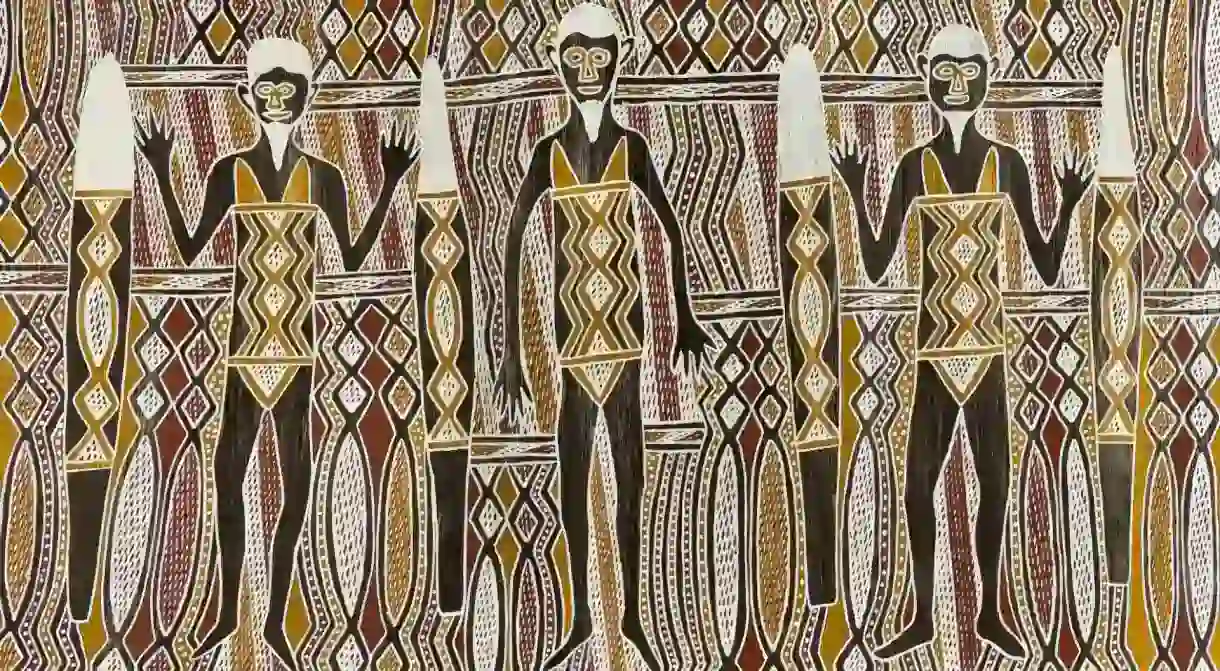The Most Sacred Places in Indigenous Australian Folklore

Even when it was being colonised by Westerners in the late 1700s, Australia already had a long cultural history, courtesy of the Indigenous peoples like Aboriginals and Torres Strait Islanders. The hugely spiritual peoples endowed many a local landmark with metaphysical significance, and that admiration continues to this very day. From shining rocks to sweeping dunes, these are the most spiritually significant spots down under.
Uluru
Natural Feature

Sometimes known as Ayers Rock, Uluru is without doubt the most sacred site in Aboriginal folklore. It’s so sacred, in fact, that the government is banning visitors from climbing it. The hulking sandstone monolith has hosted Indigenous ceremonies for more than 10,000 years, and the local Anangu community believe ancestral beings continue to live on at the site.
Kata Tjuta
Natural Feature

Another rock formation within the Uluru-Kata Tjuta National Park, Kata Tjuta consists of 36 boulders dotted across the ochre-red Central Australian landscape, and also carries spiritual significance for Indigenous people. The domes are shrouded in mysterious Aboriginal myths, including one Dreaming legend about a snake king named Wanambi who lived on the summit of Mount Olga.
Birrarung Marr
Natural Feature
Not all sacred places in Indigenous folklore are situated way out in the Australian outback, as proved by this significant ceremonial site in the heart of Melbourne. It was used for Tanderrum, a large celebration that saw five different tribes coming together; the images on the rock there represent them uniting.
Wilpena Pound
Natural Feature

Yura Muda folklore says that Wilpena Pound was created by two Dreaming serpents who ate so many people during a celebration that they became unable to move; their stricken bodies formed this vast mountain range. This 800-million-year-old natural amphitheatre is the highlight of the Flinders Ranges, about five hours’ drive north of Adelaide.
Lake Mungo
Natural Feature

50 years ago, archaeologists unearthed the remains of two people here: the Mungo Lady and the Mungo Man. The landmark discovery proved that Indigenous people had inhabited the Australian continent for more than 40,000 years. Thus, this Unesco Heritage Site is the oldest ritual burial place on the face of the Earth.
Devil's Pool
Natural Feature

This swimming hole near Cairns owes is named after an Aboriginal legend. The story goes that a young runaway bride named Oolana leapt to her death at this sacred site when she was stopped from marrying her one true love. Apparently, she’s seduced men into a watery grave ever since. The pool has claimed 17 lives since 1959; a plaque nearby reads, “He came for a visit and stayed forever.”
Arnhem Land
Natural Feature

The Yolngu people have called this north-east corner of the Northern Territory home for more than 60,000 years, so there’s rich Indigenous history all across this untamed terrain. Importantly, Arnhem Land is the birthplace of the didgeridoo. It’s also brimming with Dreaming stories, including one about a family feud that ended up with the creation of the jabiru (stork) and the emu.
Grampians National Park
Natural Feature

90% of all the Aboriginal rock art in the entire state of Victoria is located in the Grampians, a leafy national park three hours west of Melbourne. Learn about Indigenous folklore at the Brambuk Cultural Centre in Halls Gap before bushwalking your way around the colourful rock art sites.
South Australian Museum
Museum

Black Mountain/Kalkajaka
Natural Feature

As if the name Black Mountain wasn’t ominous enough! The Aboriginal moniker, Kalkajaka, translates to “place of spear”. This otherworldly mound of black granite boulders in tropical North Queensland includes four sites of religious significance to the Kuku Nyungkal people: Kambi (a cave where flying foxes are found), Julbanu (a rock shaped like a kangaroo), Birmba (a stone cockatoos call home) and Yirrmbal: a spot the Indigenous consider taboo.
Worimi Conservation Lands
Natural Feature

Stockton Beach is across the harbour from Newcastle and boasts the largest sand dunes in the Southern Hemisphere, towering 40m (131ft) high. However, the significance to Aboriginal folklore lies in the 12,000-year-old shell deposits (or middens), rich in cultural artefacts. Hop on an Indigenous tour of the sacred site to learn more.













